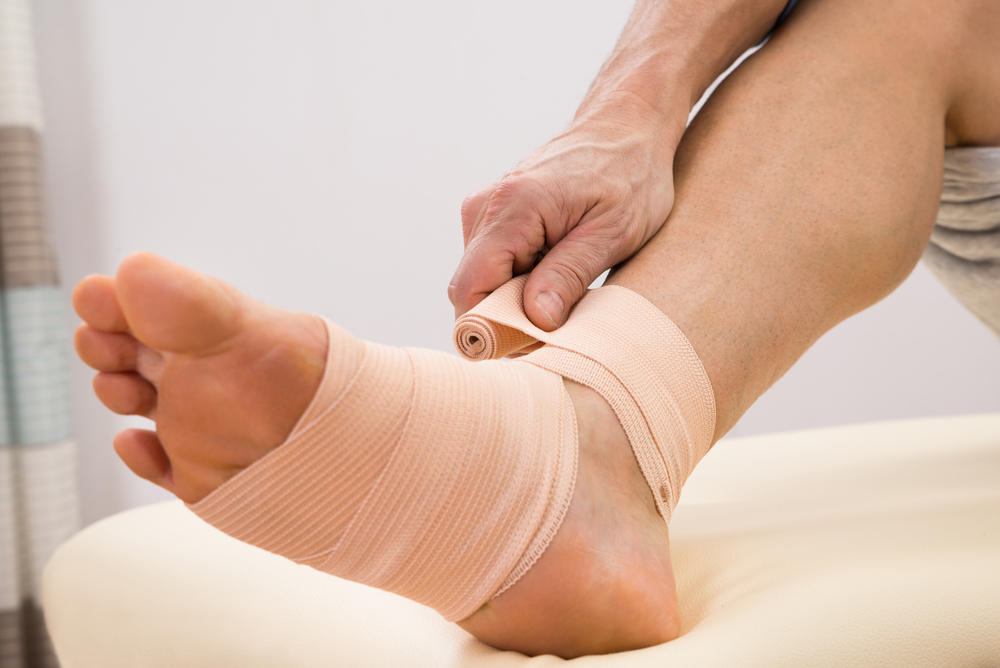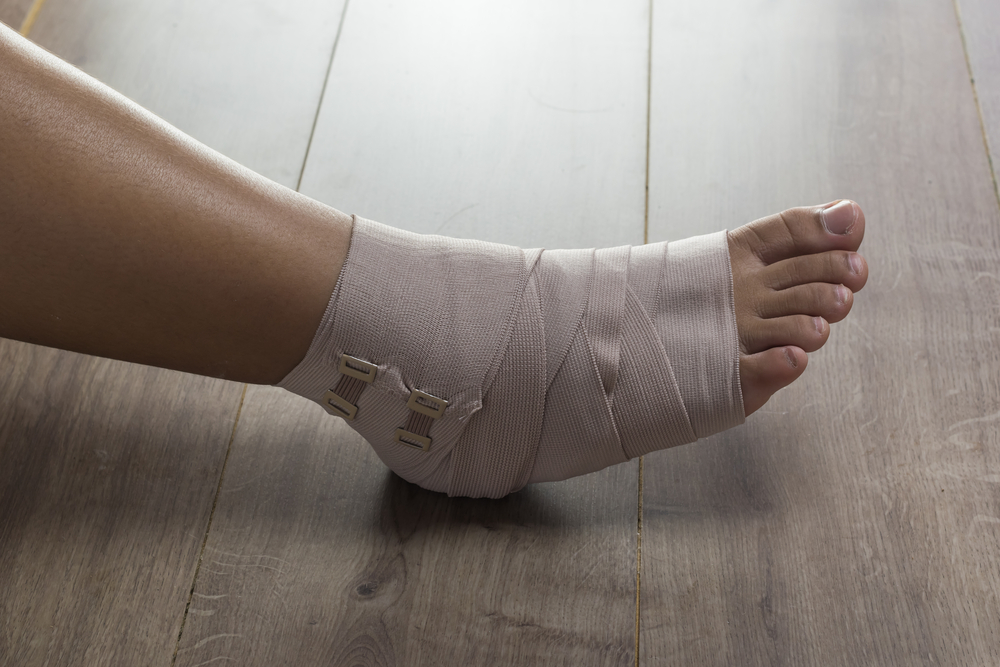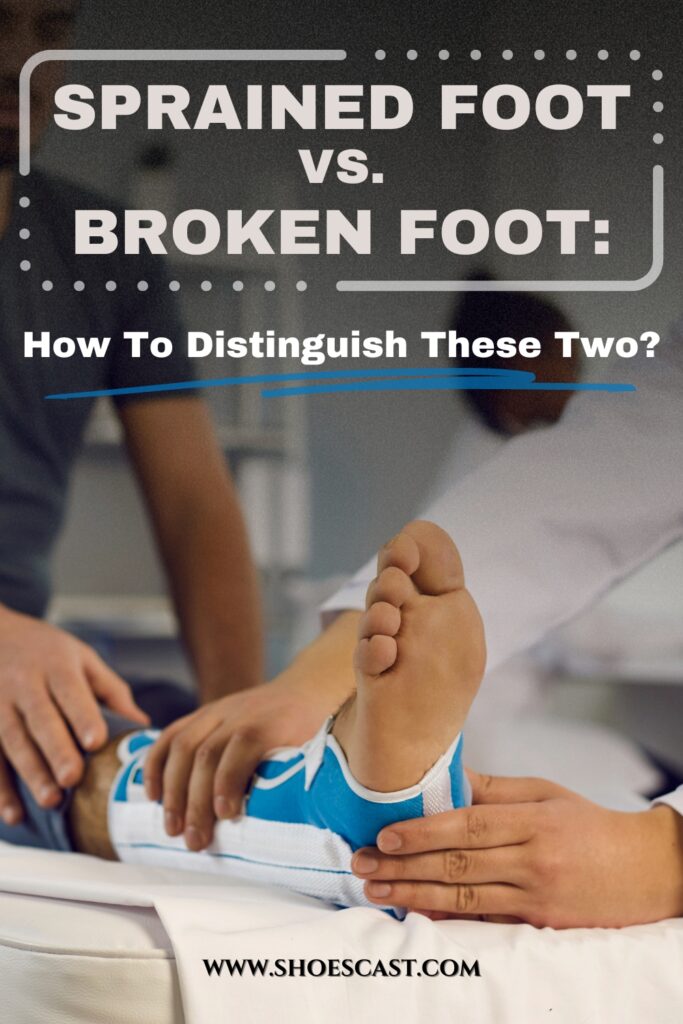If you’ve ever either sprained or broken your foot, you know how unbearable the pain can be. I remember the first time I sprained my ankle, I literally thought my spirit was about to leave my body. That’s how excruciating the pain had been.
Well, I was only 12 years old – right at the threshold of my long-to-be-fought battle with the monster called “Adolescence” – and my hormones were raging. So, maybe, just maybe, my judgment was clouded by that and my need to be dramatic took over.
However, I do remember that the pain was so severe that I thought I must have broken my foot. However, as I said, it was just a sprain. An unfortunate accident kept me bedridden for the next 6 weeks and caused me to miss the state volleyball competition.
Luckily I got over it and haven’t sprained or broken anything since. But the confusion is still here: how can I tell if something in my body is sprained or broken?
If you’re just as confused, here’s everything you need to know!
Sprained foot 101: Causes, types, and treatment

What causes a sprained foot?
Generally speaking, a sprained foot occurs when the surrounding ligaments – the strong tissues which connect bones together – get overstretched and torn.
That can happen any time when you forcefully twist your leg or awkwardly land on your foot. So basically anytime you walk, run, bump your toe against an object, jump, fall, or change direction too quickly and the wrong way, you can get your foot sprained.
Some symptoms of a sprained foot include:
- swelling around your foot or ankle
- bruising around your foot or ankle
- limping while walking
- feeling pain with any movement or while doing any activity.
Some of these symptoms can occur right away after your accident, and the pain is almost momentarily unbearable.
What are the different types of a sprained foot?
Many people confuse a sprained foot and a sprained ankle and identify them as the same. Although ankle sprain is the most common type of foot sprain, there are also other locations on your foot where you can tear your ligaments.
Your foot can be divided into three sections: the rear foot, the midfoot, and the forefoot. However, most common sprains happen in the midfoot and forefoot region.
When it comes to midfoot sprains, the ligament that usually gets torn is called the Lisfranc ligament. It is made out of three smaller connective tissues and is located in the middle of your foot near the arch.
Midfoot sprains usually occur during certain sports, like football, when a player steps on another player’s foot, or during ballet practices when ballerinas overly point their toes. They can also occur when a person falls after missing a step, or less commonly during some traumatic car accidents.
When it comes to forefoot sprains, the ligament that gets injured is located in the joint at the base of the big toe. This type of sprain is also commonly known as the “turf toe.”
This injury occurs when the big toe gets abnormally bent backward. This is a common accident during certain sports which are played on artificial surfaces (hence the “turf” in the title), but it can also happen when extremely lightweight and unsupportive shoes are worn.
And what about ankle sprains?

When it comes to ankle sprains, there are two main types.
The first, and the most common one, is referred to as an inversion ankle sprain. It happens when you roll your foot upwards, and the ankle hasty twists inwards. This forced plantarflexion tears ligaments that prevent your foot from rolling toward the arch. This injury is also referred to as a lateral ankle sprain.
And the second one is called an eversion ankle sprain. This type of sprain occurs when your ankle twists outwards and tears the deltoid ligaments. It’s also referred to as a medial ankle sprain.
There’s also an injury called a high ankle sprain. It happens when high ankle ligaments which connect the tibia and fibula (two large bones located in the lower part of the leg) get damaged. This type of injury is very rare, and it usually happens only to professional athletes.
How do you treat a sprained foot?
When you’re dealing with a sprained foot, the most important thing you can do for yourself (and your injured foot) is to rest and not force yourself to do anything that’s overly exhausting and causing you pain.
For the first couple of days, you might want to avoid hot baths and showers as the heat can increase swelling. Instead, put some ice packs every once in a while for 10 to 20 minutes to decrease the swelling. Also, keep your foot raised to help the swelling go away faster.
If your doctor has prescribed a split or immobilizer, use them according to his directions. Same thing with crutches. Make sure you always listen to your doctor and contact him whenever you feel something is off.
If needed, use painkillers to make the pain more bearable.
Once you get back on your feet, make sure to wear appropriate footwear for foot and ankle sprains, to support your needs.
Broken foot 101: Causes, types, and treatment

What causes a foot fracture?
As we all know, a foot fracture is a not-so-pleasant condition when one or more bones in the foot get broken.
The fracture usually occurs when the bone in the foot gets abnormally bent, crushed, or stretched, and it can happen through various unfortunate mishaps, like poor form while doing exercises, wearing unsupportive footwear, doing activities that include repetitive motions, or even the loss of bone density.
Some symptoms of a broken foot include:
- excruciating pain
- numbness
- swelling
- bruising
- tenderness
- deformed appearance.
What are the different types of foot fractures?
Each one of your feet has 26 bones. All these bones can be grouped into three main categories: the tarsal bones, metatarsal bones, and phalanges.
Tarsal bones are the 7 bones that make up the back end of the foot. These bones include the talus (the ankle bone), the calcaneus (the heel bone), and five tarsal bones (the medial, intermediate, and lateral cuneiforms, the cuboid, and the navicular) which together form the arch of the midfoot.
Metatarsal bones are 5 tubular bones located in the middle of the foot, and they connect the tarsal bones and the phalanges.
Lastly, phalanges are the toe bones. The big toe comes with two phalanges – the proximal and the distal. While the other four toes have three phalanges – the proximal, the middle, and the distal.
So, according to these bones and their representative names, there can be several types of foot fractures, like calcaneum (heel bone) fracture, metatarsal fracture, fifth metatarsal fracture, pilon fracture, ankle fracture, and others.
It’s also important to mention that the foot fraction can be either compound (open) or closed. A compound fracture is a term used to describe an injury when the broken bone pokes through the skin, while with a closed fracture the broken bone doesn’t break through the skin.
How do you treat a broken foot?

Treatments for broken feet depend on how severe the fraction is, where is it located, and what caused it. In most cases, doctors prescribe splints, casts, or crutches, while other, more severe cases, require urgent surgical intervention so the broken bone(s) need to be repaired.
When it comes to personal, at-home care, a person with a broken foot needs to rest, keep their foot elevated and stabilized, and sometimes even ice the broken area from time to time.
After the recovery period is over, the best thing one can do for his feet is to invest in an appropriate pair of shoes, preferably ones that were designed to support certain foot-related issues.
For example, if you happen to be someone who is recovering from a fifth metatarsal fracture, the best thing for you would be to wear shoes for that specific need.
Sprained foot vs. broken foot: So, what’s the difference?
Well, obviously the difference is in the severity of the injury. However, most of the time it can be hard to tell.
Each of these unfortunate incidents undoubtedly causes pain, so it can be difficult to distinguish whether the injury is a sprain or a fracture. Some symptoms, including swelling and bruising, for example, are the same for both of these conditions, so no wonder people often confuse them.
The safest way to be sure and to determine whether your foot is sprained or broken is to see a doctor. Your doctor will do certain tests and be able to tell you how severe your injury is. According to the results, he will then prescribe the appropriate treatment for you.
Your doctor will first do a physical examination of your foot. This includes inspecting your foot for swelling, bruising, deformity, and so on.
He might also ask you to move your foot in various directions, so he could determine your range of motion, or to stand up and walk (if you can) to determine your walking style.
Your doctor will probably do some imaging tests, too, like X-rays, MRSs (magnetic resonance imaging), CTs (computerized tomography), or bone scans, which will give you the most accurate results.
After he determines the degree of your injury, he will prescribe you the right treatment you need. The recovery from both sprained and broken feet can last between 6 and 8 weeks.
Sometimes, if the injury was too severe, the recovery can last even longer, and it might even take up to 6 months for all symptoms to settle.


